By Eilene Lyon
My usual MO when it comes to wildlife is “observe, don’t touch.” After all, we make life difficult enough for critters as it is. No need to add to their stress.
Sometimes, though, a compelling conservation reason negates the usual policy. Based on long-term surveys, e.g. the Audubon Christmas Bird Count, it’s clear that bird populations have seen sharp declines over the past century.
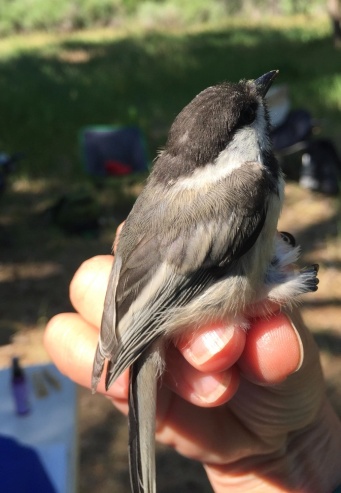
We know, certainly, that habitat loss is a major factor in wildlife numbers dropping. There may be other impacts or changes going on that require more data to comprehend and combat. For the past six years, Durango has been participating in the Monitoring Avian Productivity and Survivorship (MAPS) program. I’ve been helping with this bird-banding project for five of those years.
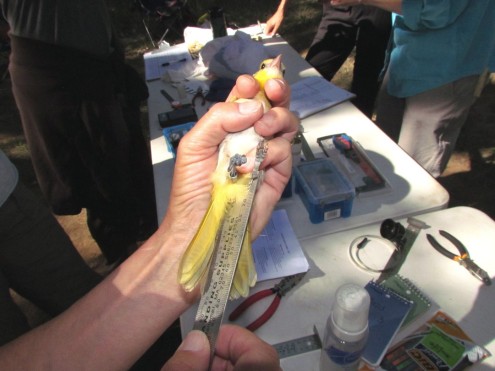
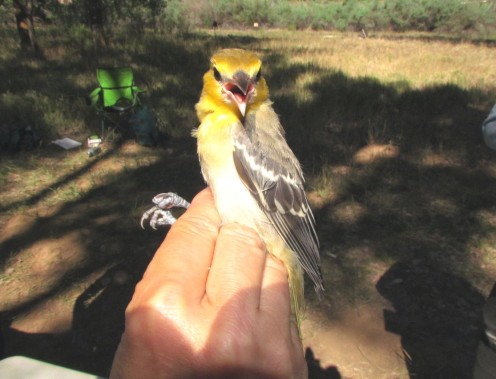
MAPS began in 1989 as a collaboration between governmental and non-governmental organizations. Banding stations have been established continent-wide in most states and Canadian provinces. The birds are captured in mist nets, banded, and information on species, sex, size, reproductive state, age, and health are collected. Then the birds are released.
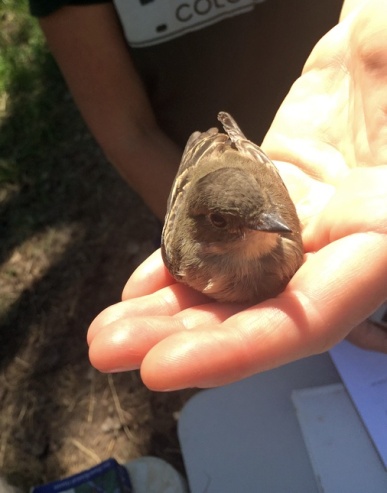
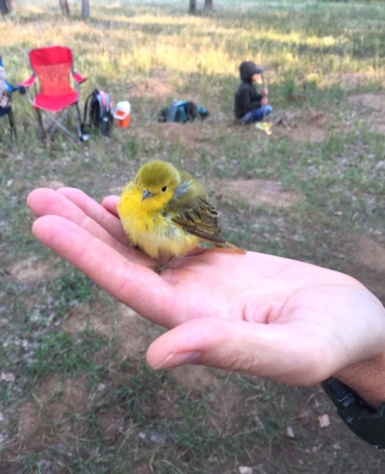
To-date, these data have contributed to 100 peer-reviewed scientific articles that help us answer the following questions:1
- “What factors drive avian population declines?
- Where are problems most acute, on the breeding or non-breeding grounds?
- What drives differences in trends between particular regions or habitats?
- What is the relationship between population change and weather, climate, or habitat loss?
- What can we do to reverse declines?”
In Durango, the MAPS program is run by Lynn Wickersham of Animas Biological Studies, and is funded jointly by the city and Colorado Parks and Wildlife. Aside from Lynn, all the participant banders are volunteers.
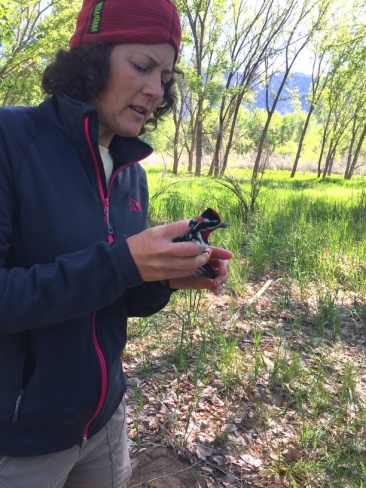
I first met Lynn, a professional ornithologist, when I helped with the Colorado Breeding Bird Atlas II project. My participation began with several seasons of field observations on two high-altitude blocks. Each block is effectively one-sixth of a USGS 7.5-minute topographic quad.
The entire state of Colorado was divided up into these blocks and volunteers did their best to find and record as many breeding birds as possible over a six-year period. This project replicated an earlier one from several decades ago, and resulted in a published hardcover book for all the species found breeding in the state. (I contributed ten peer-reviewed species accounts.)
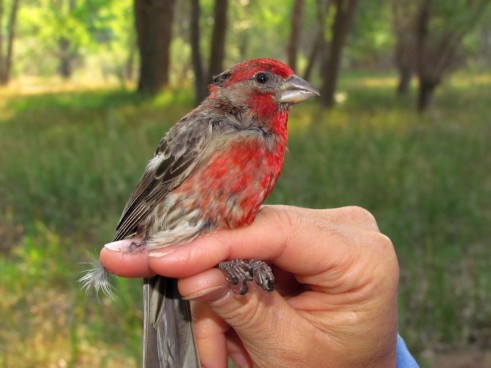
Not only is Lynn highly competent when working with birds, she is also a fabulous teacher! Even if someone has absolutely no experience, she is welcoming and encouraging. She never tires of answering the same questions – over and over and over. Even school-age kids can take part. One of our most competent bird handlers started when he was 11 or 12 (he’ll be a high school senior this fall).
For volunteers, the thrill of holding these beautiful little wonders is the best part. (We speculate that the birds get together to talk about their “alien abduction” experiences.) It doesn’t hurt that Lynn frequently brings us some home-baked treats. Yum.
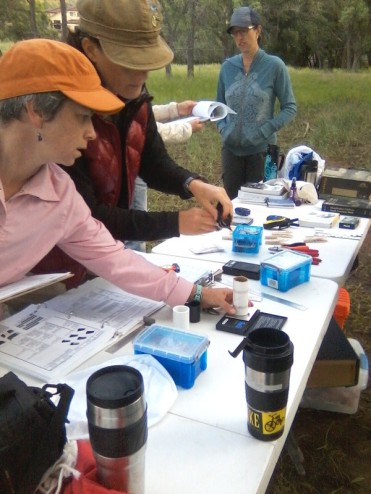
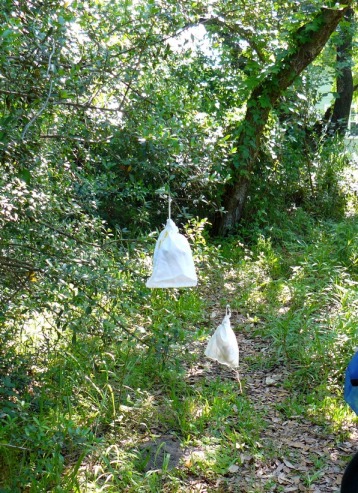
After five years banding many birds, I feel like I’m only just now getting competent at collecting all the data. But that’s not due to any lack of instruction from our fearless leader. It can be particularly difficult to see the subtle clues that help determine a bird’s age.

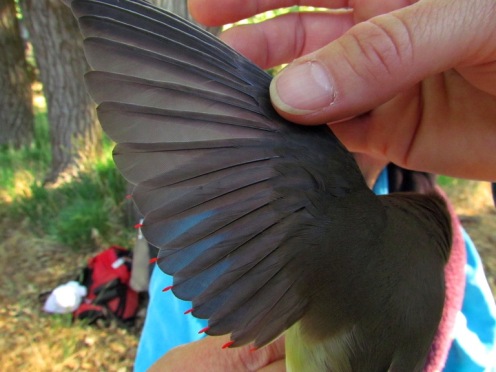
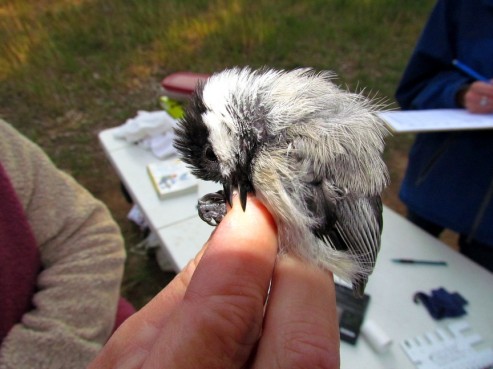
The first experience I had observing a bird-banding station was on Grand Isle, Louisiana. The bird species they caught there were migrating neo-tropicals, so I got to observe species we don’t see much (or ever) in Colorado. However, the process intrigued me and when the opportunity came up here at home, I jumped at the chance.
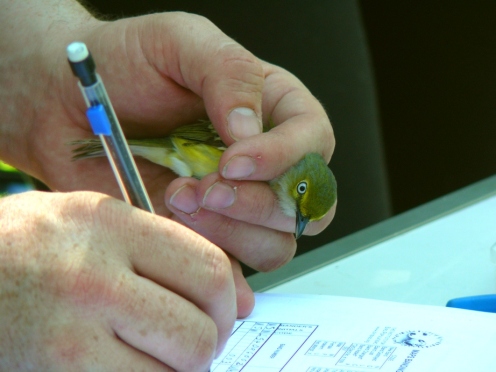
You don’t need to be a trained biologist to participate. Find out if there’s a MAPS station near you by clicking on the reference below. If you’re interested in reading the report Lynn prepared for the first five years at our Durango station, you can find it here.

Feature image: Lazuli bunting at the Oxbow Park and Preserve MAPS station in Durango, Colorado (L. Wickersham)
Other photos: the good ones by Lynn Wickersham, the so-so ones by Eilene Lyon
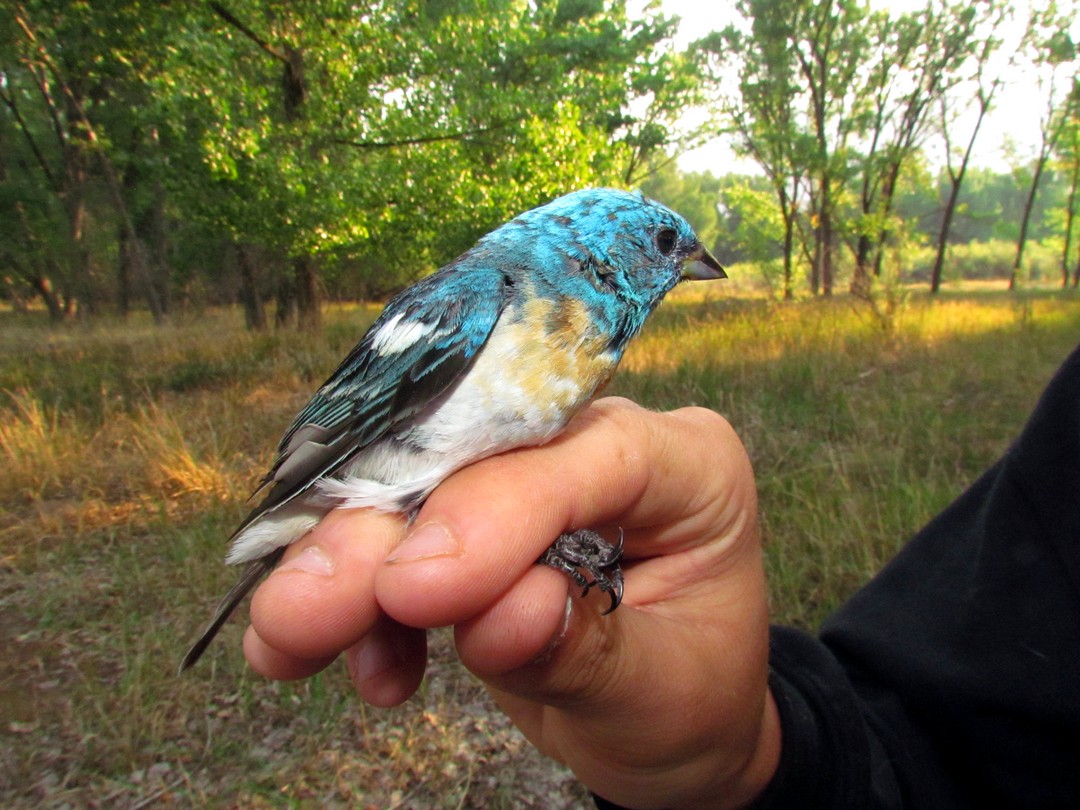
Looks like a great project to be involved with. Lots of positives ….. stimulating, eco supportive, outdoors, friendships ….. And in Durango, a placed we loved on our USA Rail Tour!
LikeLiked by 2 people
Gosh, you forgot to mention the mosquitoes! 😉
LikeLiked by 2 people
Ha! Never saw any …. in April?
LikeLiked by 1 person
Right. We get them in mid-summer. And this was a very wet year at the banding station, which is right along the river.
LikeLiked by 2 people
What colors!
I love how you can see the personalities of the birds in their respective pics. The Oriole who was giving a piece of her mind, the biter (yikes) and the curious free spirits such as the flycatcher.
Great stuff, Eilene.
LikeLiked by 2 people
Thanks, Marc. Glad you noted the personalities. My experience is all critters are individuals, not just representative of a species.
LikeLiked by 3 people
I agree. Too bad the powers that be aren’t mindful of that. I feel for all these creatures, because we’re backing them into a very small corner.
LikeLiked by 2 people
We’re cramming ourselves into the corner, too.
LikeLiked by 2 people
We sure are.
LikeLiked by 1 person
Wonderful program and this was very informative. I didn’t know you could use wings to help identify age. I looked at the map of MAPS. The closest station to us is just across the Alberta border, about a 2 hour drive.
LikeLiked by 2 people
It might be fun to go observe if the do a public outreach day. But get there the night before!
LikeLiked by 1 person
It would be. We sometimes camp near there at Cypress Hills Prov. Park, so I will look into it.
LikeLiked by 1 person
I didn’t know that either!
LikeLiked by 1 person
Very nice project. It looked like the white-eyed vireo was double checking your data!
LikeLiked by 2 people
LOL. “No, no, no. My name is Joe!”
LikeLiked by 1 person
Fascinating! And so worthwhile.
LikeLiked by 1 person
I hope so.
LikeLiked by 1 person
So sweet to be helping to manage and protect these beautiful avian creatures. 🙂
A bird in the hand is worth…
LikeLiked by 2 people
We hope so!
LikeLike
Great project! I love your writing style. I’ve always loved bird watching thanks to my Grandma. To participate in this would be amazing.
LikeLiked by 2 people
My grandparents got me into it, too.
LikeLiked by 1 person
This is a good good side of you. Nice work! And really cool.
LikeLiked by 1 person
What? Do I have a bad side? 😉
LikeLiked by 1 person
Nope, only betters!!
LikeLiked by 1 person
Kudos on your participation in this very important work!
LikeLiked by 1 person
Thanks. It’s my pleasure, really.
LikeLiked by 1 person
Beautiful birds and a worthwhile project! I’d love the chance to handle some, even at the risk of being bitten, though I don’t know why we do all have the urge to touch wild things. Obviously I usually resist that urge, but if I find a toad in the road, I will use it as an excuse to move them back into the safety of the grass – I have a total soft spot for toads.
LikeLiked by 1 person
Me, too! I definitely try to get animals out of harms way.
LikeLiked by 1 person
Fascinating. I’m glad you answered my most pressing question: do these wild birds inflict harm on the people who hold them? Apparently yes. And you know what? I don’t blame those birds at all. There you are one day flying around the forest and then suddenly some big creature grabs you and starts fussing with your nether regions and plopping jewelry on your leg. I’d peck, too.
LikeLiked by 2 people
You should have seen some of the other photos of Lynn with the sapsucker – the pain it was inflicting was evident on her face. And I’ve seen a grosbeak draw blood. I don’t blame them a bit, either!
LikeLiked by 1 person
Thanks for a very interesting read on birds. The pictures are great also!
LikeLiked by 1 person
You’re welcome! Lynn has some great bird shots, for sure.
LikeLike
What a fascinating thing to take part in! Love the pictures — even the so-so ones. 😉
That chickadee looked a bit put off by the proceedings. I can only imagine what a grosbeak would do!
LikeLiked by 1 person
It’s actually when we’re extracting them from the mist nets that we get bit the worst. Their displeasure about the situation is understandable!
LikeLiked by 1 person
Awwww – little birds! I’m actually a little leery around birds. My mom had some as pets growing up and they were never the nicest birds 😦 So now I proceed with caution haha.
LikeLiked by 1 person
They can be vicious!! LOL.
LikeLiked by 1 person